Flying ace
A flying ace, fighter ace or air ace is a military aviator credited with shooting down 5 or more enemy aircraft during aerial combat. The actual number of aerial victories required to officially qualify as an ace has varied, but is usually considered to be five or more.
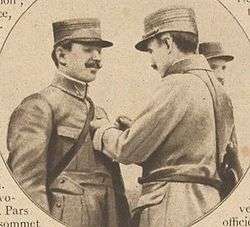
The concept of the "ace" emerged in 1915 during World War I, at the same time as aerial dogfighting. It was a propaganda term intended to provide the home front with a cult of the hero in what was otherwise a war of attrition. The individual actions of aces were widely reported and the image was disseminated of the ace as a chivalrous knight reminiscent of a bygone era.[1] For a brief early period when air-to-air combat was just being invented, the exceptionally skilled pilot could shape the battle in the skies. For most of the war, however, the image of the ace had little to do with the reality of air warfare, in which fighters fought in formation and air superiority depended heavily on the relative availability of resources.[2]
| Look up ace in Wiktionary, the free dictionary. |
Use of the term ace to describe these pilots began in World War I, when French newspapers described Adolphe Pégoud, as l'As (the ace) after he became the first pilot to down five German aircraft. The British initially used the term "star-turns" (a show business term), while the Germans described their elite fighter pilots as Überkanonen (which roughly translates to "top guns").
The successes of such German ace pilots as Max Immelmann and Oswald Boelcke were much publicized, for the benefit of civilian morale, and the Pour le Mérite, Prussia's highest award for gallantry, became part of the uniform of a leading German ace. In the Luftstreitkräfte, the Pour le Mérite was nicknamed Der blaue Max/The Blue Max, after Max Immelmann, who was the first pilot to receive this award. Initially, German aviators had to destroy eight Allied aircraft to receive this medal.[3] As the war progressed, the qualifications for Pour le Mérite were raised,[3] but successful German fighter pilots continued to be hailed as national heroes for the remainder of the war.
The few aces among combat aviators have historically accounted for the majority of air-to-air victories in military history.[4]
History
World War I

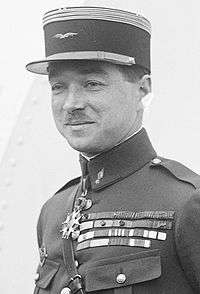
World War I introduced the systematic use of true single-seat fighter aircraft, with enough speed and agility to catch and maintain contact with targets in the air, coupled with armament sufficiently powerful to destroy the targets. Aerial combat became a prominent feature with the Fokker Scourge, in the last half of 1915. This was also the beginning of a long-standing trend in warfare, showing statistically that approximately five percent of combat pilots account for the majority of air-to-air victories.[4]
As the German fighter squadrons usually fought well within German lines, it was practicable to establish and maintain very strict guidelines for the official recognition of victory claims by German pilots. Shared victories were either credited to one of the pilots concerned or to the unit as a whole – the destruction of the aircraft had to be physically confirmed by locating its wreckage, or an independent witness to the destruction had to be found. Victories were also counted for aircraft forced down within German lines, as this usually resulted in the death or capture of the enemy aircrew.
Allied fighter pilots fought mostly in German-held airspace[5][6] and were often not in a position to confirm that an apparently destroyed enemy aircraft had in fact crashed, so these victories were frequently claimed as "driven down", "forced to land", or "out of control" (called "probables" in later wars). These victories were usually included in a pilot's totals and in citations for decorations.[7]
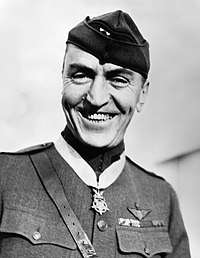
The British high command considered praise of fighter pilots to be detrimental to equally brave bomber and reconnaissance aircrew – so that the British air services did not publish official statistics on the successes of individuals. Nonetheless some pilots did become famous through press coverage,[3] making the British system for the recognition of successful fighter pilots much more informal and somewhat inconsistent. One pilot, Arthur Gould Lee, described his own score in a letter to his wife as "Eleven, five by me solo — the rest shared", adding that he was "miles from being an ace".[8] This shows that his No. 46 Squadron RAF counted shared kills, but separately from "solo" ones—one of a number of factors that seems to have varied from unit to unit. Also evident is that Lee considered a higher figure than five kills to be necessary for "ace" status. Aviation historians credit him as an ace with two enemy aircraft destroyed and five driven down out of control, for a total of seven victories.[9]
Other Allied countries, such as France and Italy, fell somewhere in between the very strict German approach and the relatively casual British one. They usually demanded independent witnessing of the destruction of an aircraft, making confirmation of victories scored in enemy territory very difficult.[10] The Belgian crediting system sometimes included "out of control" to be counted as a victory.[11]
The United States Army Air Service adopted French standards for evaluating victories, with two exceptions – during the summer of 1918, while flying under operational control of the British, the 17th Aero Squadron and the 148th Aero Squadron used British standards.[10] American newsmen, in their correspondence to their papers, decided that five victories were the minimum needed to become an ace.[12]
While "ace" status was generally won only by fighter pilots, bomber and reconnaissance crews on both sides also destroyed some enemy aircraft, typically in defending themselves from attack. The most notable example of a non-pilot ace in World War I is Charles George Gass with 39 accredited aerial victories.[13]
Between the world wars
Between the two world wars, there were two theaters that produced flying aces, the Spanish Civil War and the Second Sino-Japanese War.
The Spanish ace Joaquín García Morato scored 40 victories for the Nationalists during the Spanish Civil War. Part of the outside intervention in the war was the supply of "volunteer" foreign pilots to both sides. Russian and American aces joined the Republican air force, while the Nationalists included Germans and Italians.
The Soviet Volunteer Group began operations in the Second Sino-Japanese War as early as December 2, 1937, resulting in 28 Soviet aces.[14] The Flying Tigers were American military pilots recruited sub rosa to aid the Chinese Nationalists. They spent the summer and autumn of 1941 in transit to China, and did not begin flying combat missions until December 20, 1941.
World War II
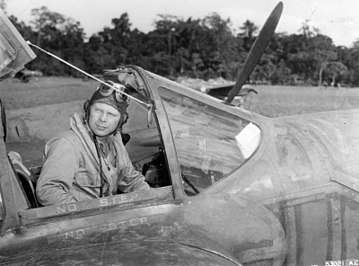
In World War II many air forces adopted the British practice of crediting fractional shares of aerial victories, resulting in fractions or decimal scores, such as 11 1⁄2 or 26.83. Some U.S. commands also credited aircraft destroyed on the ground as equal to aerial victories. The Soviets distinguished between solo and group kills, as did the Japanese, though the Imperial Japanese Navy stopped crediting individual victories (in favor of squadron tallies) in 1943. The Soviet Air Forces has the top Allied pilots in terms of aerial victories, Ivan Kozhedub credited with 66 victories and Alexander Pokryshkin scored 65 victories. It also claimed the only female aces of the war: Lydia Litvyak scored 12 victories and Yekaterina Budanova achieved 11.[15] Fighting on different sides, the French pilot Pierre Le Gloan had the unusual distinction of shooting down four German, seven Italian and seven British aircraft, the latter while he was flying for Vichy France in Syria.
The Luftwaffe continued the tradition of "one pilot, one kill", and now referred to top scorers as Experten.[N 1] During the war, and for some years after, the very high victory totals of some Experten were considered by many historians to be coloured by grandiose Nazi propaganda. In spite of this, there are 107 German pilots with more than 100 kills.
A number of factors probably contributed to the very high totals of the top German aces. For a limited period (especially during Operation Barbarossa), many Axis victories were over obsolescent aircraft and either poorly trained or inexperienced Allied pilots.[17] In addition, Luftwaffe pilots generally flew many more individual sorties (sometimes well over 1000) than their Allied counterparts. Moreover, they often kept flying combat missions until they were captured, incapacitated, or killed, while successful Allied pilots were usually either promoted to positions involving less combat flying or routinely rotated back to training bases to pass their valuable combat knowledge to younger pilots. An imbalance in the number of targets available also contributed to the apparently lower numbers on the Allied side, since the number of operational Luftwaffe fighters was normally well below 1,500, with the total aircraft number never exceeding 5,000, and the total aircraft production of the Allies being nearly triple that of the other side. A difference in tactics might have been a factor as well; Erich Hartmann, for example, stated "See if there is a straggler or an uncertain pilot among the enemy... Shoot him down.",[18] which would have been an efficient and relatively low-risk way of increasing the number of kills. At the same time, the Soviet 1943 "Instruction For Air Combat" stated that the first priority must be the enemy commander, which was a much riskier task, but one giving the highest return in case of a success.
Similarly, in the Pacific theater, one of the factors leading to the superiority of Japanese aces such as the legendary Hiroyoshi Nishizawa (about 87 kills) could be the early technical dominance of the Mitsubishi A6M "Zero" fighter.
Post-World War II aces
Korean War
The Korean War of 1950–53 marked the transition from piston-engined propeller driven aircraft to more modern jet aircraft. As such, it saw the world's first jet-vs-jet aces.
Vietnam War
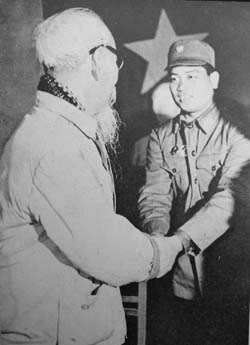
The Vietnam People's Air Force had begun development of its modern air-forces, primarily trained by Czechoslovak and Soviet trainers since 1956.[19] The outbreak of the largest sustained bombardment campaign in history prompted rapid deployment of the nascent air-force, and the first engagement of the war was on April 1965 at Thanh Hóa Bridge which saw relatively outdated subsonic MiG-17 units thrown against technically superior F-105 Thunderchief fighter crafts and F-8 Crusader, damaging 1 F-8 and killing two F-105 jets.[20] The Mig-17 generally did not have sophisticated radars and missiles and relied on dog-fighting and manoeuvrability to score kills on US aircraft.[19] Since US aircraft heavily outnumbered North Vietnamese ones, the Warsaw Pact and others had begun arming North Vietnam with MiG-21 jets.[19] The VPAF had adopted an interesting strategy of "guerrilla warfare in the sky" utilising quick hit-and-run attacks against US targets, continually flying low and forcing faster, more heavily-armed US jets to engage in dog-fighting where the Mig-17 and Mig-21 had superior manoeuvrability.[21] The VPAF had carried out the first air-raid on US ships since WW2, with two aces including Nguyễn Văn Bảy attacking US ships during the Battle of Đồng Hới in 1972. Quite often air-to-air losses of US fighter jets were re-attributed to surface-to-air missiles, as it was considered "less embarrassing".[22] By the war's end, the US had nevertheless confirmed 245 air-to-air US aircraft losses[23] while the figures for North Vietnam are disputed, ranging from 195 North Vietnamese aircraft from US claims[24] to 131 from Soviet, North Vietnamese and allied records.[25]
American air-to-air combat during the Vietnam War generally matched intruding United States fighter-bombers against radar-directed integrated North Vietnamese air defense systems. American F-4 Phantom II, F-8 Crusader and F-105 fighter crews usually had to contend with surface-to-air missiles, anti-aircraft artillery, and machine gun fire before opposing fighters attacked them. The long-running conflict produced 22 aces: 17 North Vietnamese pilots, two American pilots, three American weapon systems officers or WSOs (WSO is the USAF designation, one of the three was actually a US Naval aviator, with an equivalent job, but using the USN designation of Radar Intercept Officer or RIO).[26]
Arab–Israeli war
The series of wars and conflicts between Israel and its neighbors began with Israeli independence in 1948 and continued for over three decades.
Iran–Iraq war
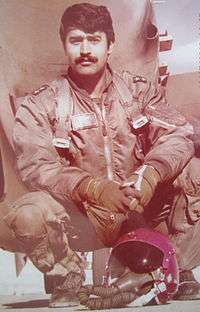
Brig. General Jalil Zandi (1951–2001) was an ace fighter pilot in the Islamic Republic of Iran Air Force, serving for the full duration of the Iran–Iraq War. His record of eight confirmed and three probable[27] victories against Iraqi combat aircraft qualifies him as an ace and the most successful pilot of that conflict and the most successful Grumman F-14 Tomcat pilot worldwide.[28][29][30][31][32]
Brig. General Shahram Rostami was another Iranian ace. He was also an F-14 pilot. He had six confirmed kills. His victories include one MiG-21, two MiG-25s, and three Mirage F1s.[33]Colonel Mohammed Rayyan was also another ace fighter pilot who shot down 5 to 8 Iranian aircraft, mostly F-4 Phantoms during the war.[34]
Indo-Pakistan War
Air Commodore Muhammad Mahmood Alam was an ace fighter pilot in the Pakistan Air Force. During the Indo-Pakistani War of 1965, Alam downed five aircraft in a single sortie on 7 September 1965 with four in less than a minute, establishing a world record.[35][36][37][38]
Accuracy
Realistic assessment of enemy casualties is important for intelligence purposes, so most air forces expend considerable effort to ensure accuracy in victory claims. In World War II, the aircraft gun camera came into general usage, partly in hope of alleviating inaccurate victory claims.[N 2]
And yet, to quote an extreme example, in the Korean War, both the U.S. and Communist air arms claimed a 10-to-1 victory/loss ratio.[40][41] Without delving too deeply into these claims, they are obviously mutually incompatible. Arguably, few recognized aces actually shot down as many aircraft as credited to them. There are several reasons for the overstatement of victories: the use of a high victory-to-loss ratio and/or a high total number of victories claimed are utilized in propaganda; there is the inherent confusion of three-dimensional, high speed combat between large numbers of aircraft, but this is mostly resolved through the use of on-board cameras; and the competitiveness and the desire for recognition (not to mention optimistic enthusiasm) also figure into inflation, especially when the attainment of a specific total is required for a particular decoration or promotion.[42] Adolf Galland stated: "Hermann Göring actually goes much further, and claims that scores were deliberately falsified for the purpose of fabricating grounds for decorations—but this seems unlikely to be the case, nor Goering's real opinion."[39]
The most accurate figures usually belong to the air arm fighting over its own territory, where many wrecks can be located, and even identified, and where shot down enemy are either killed or captured. It is for this reason that at least 76 of the 80 aircraft credited to Manfred von Richthofen can be tied to known British losses[43]—the German Jagdstaffeln flew defensively, on their own side of the lines, in part due to General Hugh Trenchard's policy of offensive patrol.
On the other hand, losses (especially in aircraft as opposed to personnel) are sometimes recorded inaccurately, for various reasons. Nearly 50% of RAF victories in the Battle of Britain, for instance, do not tally statistically with recorded German losses—but some at least of this apparent over-claiming can be tallied with known wrecks, and aircrew known to have been in British PoW camps.[44] There are several reasons for the understatement of losses: attempting to cover-up incompetence or to create the impression that the commander is doing his job well; poor reporting procedures; and the loss of records due to enemy action, fire, wartime confusion, and/or purposeful destruction.
Non-pilot aces

While aces are generally thought of exclusively as fighter pilots, some have accorded this status to gunners on bombers or reconnaissance aircraft, observers in two-seater fighters such as the early Bristol F.2b, and navigators/weapons officers in aircraft like the F-4 Phantom. Because pilots often teamed with different air crew members, an observer or gunner might be an ace while his pilot is not, or vice versa. Observer aces constitute a sizable minority in many lists. Charles George Gass, who tallied 39 victories, was the highest scoring observer ace in World War I.[45]
In World War II, United States Army Air Forces B-17 tail gunner S/Sgt. Michael Arooth (379th Bomb Group) was credited with 17 victories.[46][47] The Royal Air Force's leading bomber gunner, Wallace McIntosh, was credited with eight kills, including three on one mission. Flight Sergeant F. J. Barker scored 13 victories while flying as a gunner in a Boulton Paul Defiant turret fighter piloted by Flight Sergeant E. R. Thorne.[48][49]
With the advent of more advanced technology, a third category of ace appeared. Charles B. DeBellevue became not only the first U.S. Air Force weapon systems officer (WSO) to become an ace but also the top American ace of the Vietnam War, with six victories.[50] Close behind with five were fellow WSO Jeffrey Feinstein[51] and Radar Intercept Officer William P. Driscoll.[52]
Ace in a day
The first military aviators to score five or more victories on the same date, thus each becoming an "ace in a day", were pilot Julius Arigi and observer/gunner Johann Lasi of the Austro-Hungarian air force, on August 22, 1916, when they downed five Italian aircraft.[53] The feat was repeated five more times during World War I.[54][55][56]
Becoming an ace in a day became relatively common during World War II. A total of 68 U.S. pilots (43 Army Air Forces, 18 Navy, and seven Marine Corps pilots) were credited with the feat.
In the Soviet offensive of 1944 in the Karelian Isthmus, Finnish pilot Hans Wind shot down 30 enemy aircraft in 12 days. In doing so, he obtained "ace in a day" status three times.
See also
- Fighter aircraft
- Light fighter
- List of World War I flying aces
- List of World War II flying aces
- List of World War II aces by country
- List of German World War II jet aces
- List of Spanish Civil War flying aces
- List of Korean War flying aces
- List of Vietnam War flying aces
- Lists of flying aces in Arab–Israeli wars
- List of Egyptian flying aces
- List of Israeli flying aces
- List of Syrian flying aces
- List of aces of aces
- Iranian aerial victories during the Iran–Iraq war
- Iraqi aerial victories during the Iran–Iraq war
References
Notes
- For the award of decorations, the Germans initiated a points system to equal up achievements between the aces flying on the Eastern front with those on other, more demanding, fronts: one for a fighter, two for a twin-engine bomber, three for a four-engine bomber; night victories counted double; Mosquitoes counted double, due to the difficulty of bringing them down.[16]
- The classic instance of this is the catastrophic failure of German intelligence to accurately assess RAF losses during the Battle of Britain, due (in large part anyway) to wild over-claiming by German fighter pilots.[39]
Citations
- Robertson, pp. 100—103.
- Belich 2001.
- Payne, Dr. David. "Major 'Mick' Mannock, VC: Top Scoring British Flying Ace in the Great War." Western Front Association, May 21, 2008.
- Dunnigan 2003, p. 149.
- Shores et al. 1990, p. 6.
- Guttman 2009, p. 39.
- Shores, Franks and Guest, 1990, p. 8.
- Lee 1968, p. 208.
- Shores et al. 1990, pp. 236–237.
- Franks and Bailey 1992, p. 6.
- Pieters 1998, pp. 34, 85.
- Farr 1979, p. 55.
- Franks et al. 1997, pp. 18–19.
- "Allied aces of War in China and Mongol-Manchurian border" Wio.ru Retrieved: October 10, 2014.
- Bergström 2007, p. 83.
- Johnson 1967, p. 264.
- Shores 1983, pp. 94–95.
- Toliver, Raymond F.; Constable, Trevor J. (1986). The Blond Knight of Germany. New York: McGraw-Hill. ISBN 978-0-8306-8189-1.CS1 maint: ref=harv (link)
- Toperczer, István (2017-09-21). MiG-21 Aces of the Vietnam War. Bloomsbury Publishing. ISBN 9781472823571.
- Toperczer, István (2017-09-21). MiG-21 Aces of the Vietnam War. Bloomsbury Publishing. p. 4. ISBN 9781472823571.
- Toperczer, István (2016-10-20). MiG-17/19 Aces of the Vietnam War. Bloomsbury Publishing. ISBN 9781472812575.
- E., Gordon (2008). Mikoyan MiG-21. Dexter, Keith., Komissarov, Dmitriĭ (Dmitriĭ Sergeevich). Hinckley: Midland. ISBN 9781857802573. OCLC 245555578.
- "US Air-to-Air Losses in the Vietnam War". myplace.frontier.com. Retrieved 2018-06-19.
- Air warfare: an international encyclopedia. Boyne, Walter J., 1929-. Santa Barbara, Calif.: ABC-CLIO. 2002. p. 679. ISBN 978-1576073452. OCLC 49225204.CS1 maint: others (link)
- "Kafedra i klinika urologii pervogo sankt-peterburgskogo gosudarstvennogo meditsinskogo universiteta im. akad. I. P. Pavlova: vchera, segodnya, zavtra". Urologicheskie Vedomosti. 5 (1): 3. 2015-03-15. doi:10.17816/uroved513-6. ISSN 2225-9074.
- "Aces." Safari Kovi. Retrieved October 10, 2014.
- Herbert, Adam (January 2015). "Air Power Classics". Air Force Magazine: 76.
- "Imperial Iranian Air Force: Samurai in the skies." IIAF, August 22, 1980. Retrieved October 10, 2014.
- Cooper, Tom and Farzad Bishop. "Fire in the Hills: Iranian and Iraqi Battles of Autumn 1982." ACIG, September 9, 2003. Retrieved October 10, 2014.
- "Archived copy". Archived from the original on 2013-10-17. Retrieved 2015-04-16.CS1 maint: archived copy as title (link)
- "Archived copy". Archived from the original on 2010-03-23. Retrieved 2018-03-25.CS1 maint: archived copy as title (link)
- "Archived copy". Archived from the original on 2010-03-23. Retrieved 2011-07-29.CS1 maint: archived copy as title (link)
- John Sadler, Rosie Serdville (2017), Fighter Aces: Knights of the Skies, Casemate Publishers, p. 21, ISBN 9781612004839CS1 maint: uses authors parameter (link)
- Nicolle, David; Cooper, Tom (2004). Arab MiG-19 and MiG-21 Units in Combat. Osprey Publishing.
- Air Cdre M Kaiser Tufail. "Alam's Speed-shooting Classic". Defencejournal.com. Retrieved 15 November 2011.
- Fricker, John. Battle for Pakistan: the air war of 1965. pp. 15–17.
- Polmar, Norman; Bell, Dana (2003). One hundred years of world military aircraft. Naval Institute Press. p. 354. ISBN 978-1-59114-686-5.
Mohammed Mahmood Alam claimed five victories against Indian Air Force Hawker Hunters, four of them in less than one minute! Alam, who ended the conflict with 9 kills, became history's only jet "ace-in-a-day."
- O' Nordeen, Lon (1985). Air Warfare in the Missile Age. Washington, D.C.: Smithsonian Institution Press. pp. 84–87. ISBN 978-0-87474-680-8.
- Galland 1956, p. 279.
- "Korean Air War: Korean air war statistics from sources of USA and USSR." Wio (RU). Retrieved: October 10, 2014.
- Shores 1983, pp. 161–167.
- Shores, Christopher. "Re: Flying Tigers VS Christopher Shores?" 12 O'clock high, 2007.
- Robinson 1958, pp. 150–155.
- Lake 2000, p. 122.
- Franks et al. 1997, p. 18.
- "Hall of Valor: Michael Arooth." Military Times. Retrieved: October 10, 2014.
- Phaneuf, Wayne. "Springfield's 375th: City monuments honor those who answered the call of duty." The Republican , May 29, 2011.
- "The Airmen's Stories: Sgt. F J Barker." Archived 2014-04-19 at the Wayback Machine Battle of Britain London Monument. Retrieved: April 17, 2014.
- Thomas 2012, p. 55.
- "Col. Charles DeBellevue." Archived 2009-09-12 at the Wayback Machine U.S. Air Force official web site. Retrieved: May 22, 2010.
- "USAF Southeast Asia War Aces." Archived 2013-12-20 at the Wayback Machine National Museum of the United States Air Force, March 30, 2011. Retrieved: June 29, 2012.
- "USS Constellation (CV 64)." United States Navy. Retrieved: June 29, 2012.
- O'Connor 1986, pp. 190–91, 272, 324.
- Franks et al. 1993, p. 70.
- Shores et al. 1990, pp. 368, 390.
- Franks and Bailey 1992, p. 161.
Bibliography
- Belich, Jamie. "Ace, air combat". Richard Holmes, Charles Singleton and Spencer Jones, eds. The Oxford Companion to Military History. Oxford University Press, 2001 [online 2004].
- Bergström, Christer. Barbarossa: The Air Battle, July–December 1941. Birmingham, UK: Classic Publications, 2007. ISBN 978-1-85780-270-2.
- Dunnigan, James F. How to Make War: A Comprehensive Guide to Modern Warfare in the Twenty-first Century. New York: HarperCollins, 2003. ISBN 978-0-06009-012-8.
- Farr, Finis. Rickenbacker's Luck: An American Life. New York: Houghton Mifflin, 1979. ISBN 978-0-395-27102-5.
- Franks, Norman and Frank W. Bailey. Over the Front: A Complete Record of the Fighter Aces and Units of the United States and French Air Services, 1914–1918. London: Grub Street, 1992. ISBN 978-0-948817-54-0.
- Franks, Norman, Frank W. Bailey and Russell Guest. Above the Lines: The Aces and Fighter Units of the German Air Service, Naval Air Service and Flanders Marine Corps, 1914–1918. London: Grub Street, 1993. ISBN 978-0-94881-773-1.
- ———; Guest, Russell; Alegi, Gregory (1997), Above the War Fronts: The British Two-seater Bomber Pilot and Observer Aces, the British Two-seater Fighter Observer Aces, and the Belgian, Italian, Austro-Hungarian and Russian Fighter Aces, 1914–1918, Fighting Airmen of WWI, 4, London: Grub Street, ISBN 978-1-898697-56-5.
- Galland, Adolf The First and the Last London, Methuen, 1955 (Die Ersten und die Letzten Germany, Franz Schneekluth, 1953).
- Goll, Nicole-Melanie (2011). "Godwin von Brumowski (1889–1936): The Construction of an Austro-Hungarian War Hero during World War I". In Marija Wakounig; Karlo Ruzicic-Kessler (eds.). From the Industrial Revolution to World War II in East Central Europe. LIT Verlag. pp. 139–56. ISBN 978-3643901293.CS1 maint: ref=harv (link)
- Guttman, Jon. Pusher Aces of World War 1. London: Osprey, 2009. ISBN 978-1-84603-417-6.
- Hobson, Chris. Vietnam Air Losses, USAF, USN, USMC, Fixed-Wing Aircraft Losses in Southeast Asia 1961–1973. North Branch, Minnesota: Specialty Press, 2001. ISBN 1-85780-115-6.
- Johnson, J. E. Wing Leader. London: Ballantine, 1967.
- Lake, John. The Battle of Britain. London: Amber Books, 2000. ISBN 1-85605-535-3.
- Lee, Arthur Gould. No Parachute. London: Jarrolds, 1968.
- O'Connor, Martin. Air Aces of the Austro-Hungarian Empire 1914–1918. Boulder, Colorado: Flying Machine Press, 1986. ISBN 978-1-89126-806-9.
- Pieters, Walter M. Above Flanders' Fields: A Complete Record of the Belgian Fighter Pilots and Their Units During the Great War, 1914–1918. London: Grub Street, 1998. ISBN 978-1-898697-83-1.
- Robertson, Linda R. (2005). The Dream of Civilized Warfare: World War I Flying Aces and the American Imagination . University of Minnesota Press. ISBN 0816642710, ISBN 978-0816642717
- Robinson, Bruce (ed.) von Richthofen and the Flying Circus. Letchworth, UK: Harleyford, 1958.
- Shores, Christopher. Air Aces. Greenwich Connecticut: Bison Books, 1983. ISBN 0-86124-104-5
- ———; Franks, Norman; Guest, Russell (1990), Above the Trenches: A Complete Record of the Fighter Aces and Units of the British Empire Air Forces 1915–1920, London: Grub Street, ISBN 978-0-948817-19-9.
- Stenman, Kari and Kalevi Keskinen. Finnish Aces of World War 2 (Osprey Aircraft of the Aces, number 23). London: Osprey Publishing. 1998. ISBN 952-5186-24-5.
- Thomas, Andrew. Defiant, Blenheim and Havoc Aces. London: Osprey Publishing, 2012. ISBN 978-1-84908-666-0.
- Toliver, Raymond J. and Trevor J. Constable. Horrido!: Fighter Aces of the Luftwaffe. London: Bantam Books, 1979. ISBN 978-0-55312-663-1.
- Toperczer, Istvan. MIG-17 and MIG-19 Units of the Vietnam War (Osprey Combat Aircraft, number 25). London: Osprey, 2001. ISBN 978-1-84176-162-6.
- ——— (2001), MIG-21 Units of the Vietnam War, Combat Aircraft, London: Osprey, ISBN 978-1-84176-263-0.
External links
| Wikimedia Commons has media related to Flying aces. |